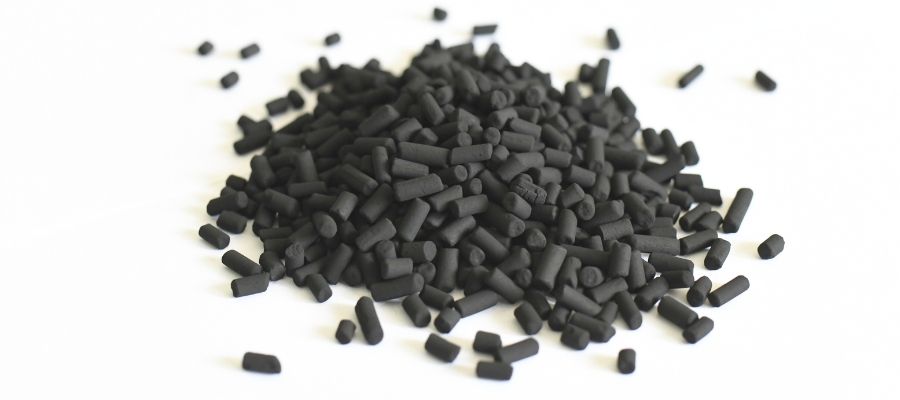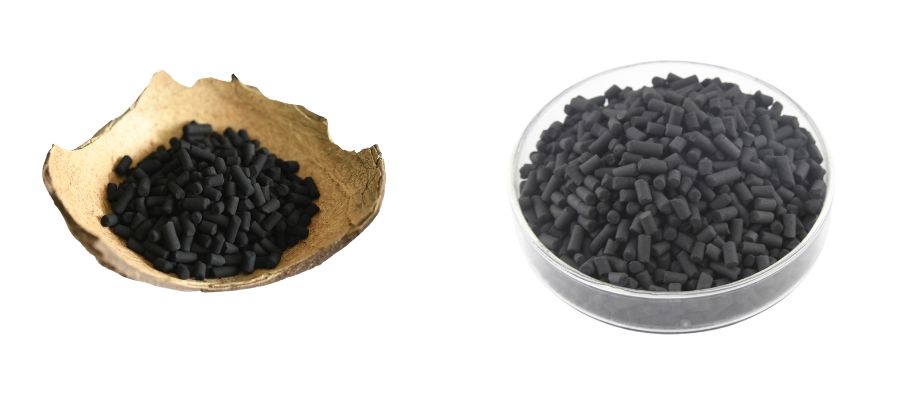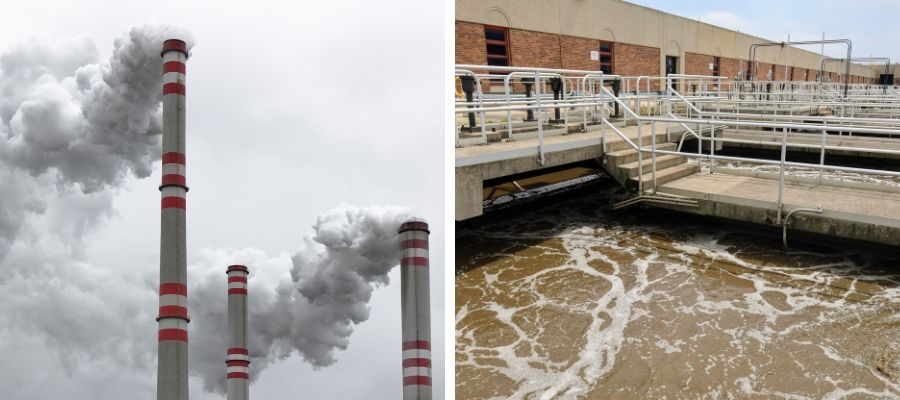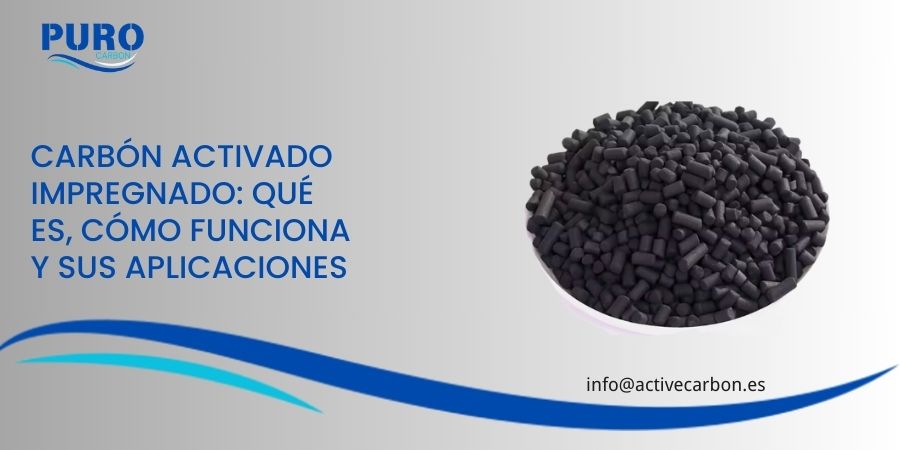Activated carbon is a multifunctional material that is used in a wide range of industries for its excellent adsorption capacity. However, there is a special variant that takes its performance to an even higher level: impregnated activated carbon.
In this article, we will take a closer look at what impregnated activated carbon is, how it is produced, its unique properties and the applications that make it so valuable in various industrial sectors.
What Is Impregnated Activated Carbon?

Impregnated activated carbon is a special variant of activated carbon that has been treated with additional chemicals to enhance its performance in specific applications. This impregnation process enhances the impressive adsorption capabilities of activated carbon, allowing it to more effectively capture and retain target contaminants and molecules.
Unlike standard activated carbon, which relies primarily on its porous structure for adsorption, impregnated activated carbon combines these physical properties with modified surface chemistry.
Impregnating agents, which can range from metals such as silver to organic and inorganic compounds, are specifically selected to meet the purification or separation needs of particular applications.
Impregnated Activated Carbon Production Process
The manufacture of impregnated activated carbon is a delicate process involving several steps:
- Selection of base carbonYou start with a high quality activated carbon, which can be of vegetable origin (such as our coconut shell activated carbon) or mineral (carbon-based activated carbon).
- Preparation of the impregnation solutionA solution containing the desired chemical compounds is prepared for impregnation.
- ImpregnationThe activated carbon is dipped or sprayed with the prepared solution, allowing the impregnating agents to penetrate the pores and adhere to the surface.
- DryingThe impregnated charcoal is carefully dried to remove excess moisture.
- Thermal activationIn some cases, an additional heat treatment is performed to fix the impregnation agents and optimize their distribution in the coal.
- Quality controlTests are performed to ensure that the impregnated activated carbon meets the required specifications.
Properties and Advantages of Impregnated Activated Charcoal

Impregnated activated carbon has a number of unique characteristics:
- Increased selectivityImpregnation allows the carbon to be designed to capture specific pollutants more efficiently.
- Improved adsorption capacityImpregnating agents can significantly increase the adsorption capacity of certain compounds.
- Antibacterial propertiesSome types of impregnated charcoal, such as silver-treated charcoal, have antibacterial properties.
- Longer service lifeIn many applications, impregnated carbon can have a longer service life than conventional activated carbon.
- VersatilityThe various impregnating agents allow the carbon to be adapted to a wide range of specific applications.
These properties make impregnated activated carbon especially valuable in situations requiring exceptional or specialized performance.
Request a QuoteImpregnated Activated Carbon Applications

Impregnated activated carbon is used in a variety of fields:
- Water purificationIt is effective in the removal of specific pollutants, such as heavy metals, chlorine and organic compounds.
- Air purificationIt is used to remove noxious gases such as hydrogen sulfide, sulfur dioxide and ammonia.
- Food industryAids in the decolorization and purification of food liquids.
- Chemical industryFacilitates the separation and purification of various chemical compounds.
- Wastewater treatmentImproves the efficiency in the elimination of specific pollutants in treatment plants.
Comparison With Conventional Activated Carbon
Impregnated activated carbon offers several advantages over conventional activated carbon:
- Increased specificityWhile standard activated carbon offers general adsorption, impregnated activated carbon can be designed to target specific contaminants.
- Improved performanceIn many applications, impregnated carbon outperforms conventional carbon in terms of adsorption capacity and speed of adsorption.
- Additional functionsImpregnation can add additional properties, such as catalytic or antibacterial activity, not found in standard activated carbon.
However, it is important to note that impregnated activated carbon is usually more expensive and may have a more limited range of applications compared to conventional activated carbon.
Request a QuoteConclusion
Impregnated activated carbon, thanks to its higher adsorption capacity, plays a crucial role in air and water purification. At PuroCarbon S.L., we offer a wide range of high quality impregnated activated carbon products.
If you are looking to improve your purification processes or explore the possibilities of impregnated activated carbon, do not hesitate to contact us at. Our team of experts will be pleased to advise you and provide you with detailed information about our products.
Frequently Asked Questions
Common impregnating agents include metals such as silver, copper and zinc, inorganic compounds such as hydroxides and acids, and certain organic compounds. The selection of the impregnation agent depends on the intended application of the impregnated activated carbon.
Generally yes. The additional impregnation process and materials used increase production costs. However, their higher efficiency and specificity can translate into better performance and greater durability, offsetting the higher initial cost in many applications.
In some cases, yes, however, the regeneration process can be more complex than that of standard activated carbon and could affect the impregnation agent. The possibility of regeneration and the methods used will depend on the specific type of impregnation and the application.
Many types of impregnated activated carbon are certified for use in food processing and drinking water applications. However, it is essential to verify certifications and suitability for each specific application.
Choosing the right type of impregnated activated carbon involves considering factors such as the type of contaminant to be removed, process conditions, regulatory requirements and economic constraints. At PuroCarbon S.L., we offer expert advice to help customers select the most suitable product for their specific needs.
